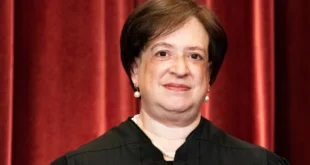The House overwhelmingly voted Tuesday in support of legislation that would remove statues of Confederate officials from the Capitol as well as the bust of the Supreme Court chief justice who penned the 1857 opinion in the Dred Scott ruling that said Black people weren’t citizens.
In a 285-120 vote, lawmakers backed a resolution that would direct the removal of certain statues or busts publicly displayed around the Capitol: those who voluntarily served in the military or the government of the Confederacy or a state while it was “in rebellion” with the U.S. The architect of the Capitol would be tasked with identifying the statues while the Joint Committee on the Library would be responsible for taking them off the grounds.
Some of the statues in question include ones of Jefferson Davis and Alexander Stephens, the president and vice president of the Confederacy. Both are located in National Statuary Hall where each state can designate the two statues it wants displayed at the Capitol.
The measure would also direct the bust of late Chief Justice Roger Brooke Taney to be replaced by one of late Justice Thurgood Marshall, the first Black justice on the high court. Taney, whose bust currently sits in the Old Supreme Court Chamber at the Capitol, wrote the Dred Scott v. Sandford ruling that people of African descent “are not included, and were not intended to be included, under the word ‘citizens’ in the Constitution, and can therefore claim none of the rights and privileges which that instrument provides for and secures to citizens of the United States.”
“Removing these statues will not erase the stain and that of other racist acts in our history, nor will it erase the racism that exists in our country today, but it is an important and necessary step,” House Speaker Nancy Pelosi said before the vote. “How can we seek to end the scourge of racism … when we allow the worst perpetrators of that racism to be lauded in the halls of Congress?”
The resolution, sponsored by House Majority Leader Steny Hoyer, also passed the House last year but ultimately stalled in the Senate when it was led by Republicans. In 2020, the measure passed in a 305-113 vote but it divided the Republican conference: 72 backed it while 113 opposed it. On Tuesday, it once again garnered support from all Democrats plus 67 Republicans.
While many ultimately supported the measure, Republicans still used the debate before the vote to take aim at Democrats – whether it was over not removing the statues sooner, pointing out their affiliation to the Democratic Party or talking about other issues that were not at play on Tuesday like critical race theory, a framework challenging the way race is traditionally discussed in classrooms and teaching that racism is pervasive in U.S. law and institutions.
“I’ll vote for this bill today, just as I voted for it before. But Madam Speaker, if we have not learned anything, we should not divide our nation based on race,” said House Minority Leader Kevin McCarthy, who launched into a criticism of critical race theory curriculum.
The path this time around looks more promising, yet still, uncertain in a 50-50 Senate narrowly controlled by Democrats. If all 50 Democratic senators support the resolution, the party will need another 10 Republicans to vote with them to advance the bill and move to final passage.
 Poli Alert Political & Civics
Poli Alert Political & Civics



